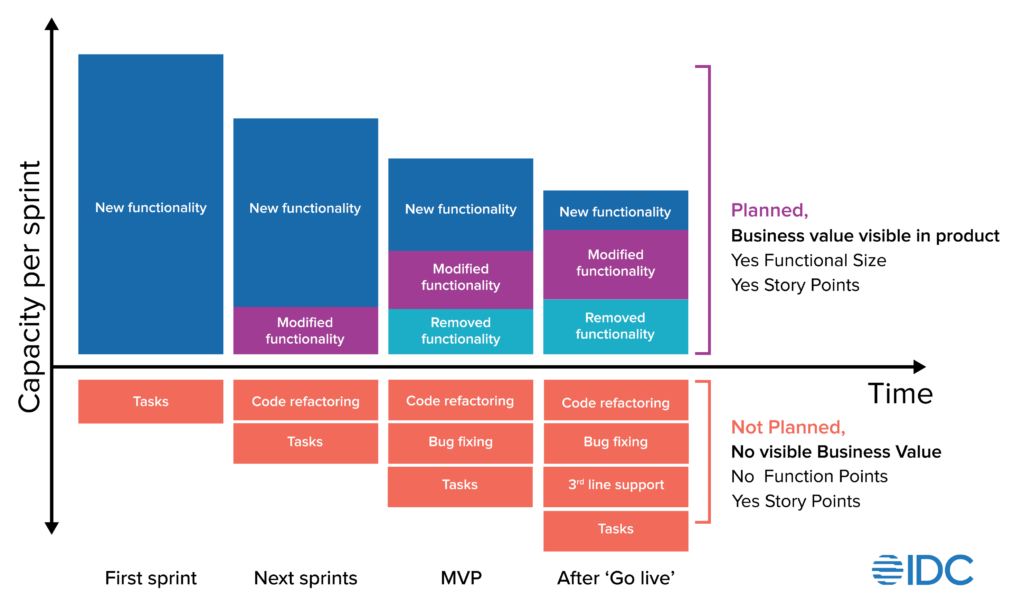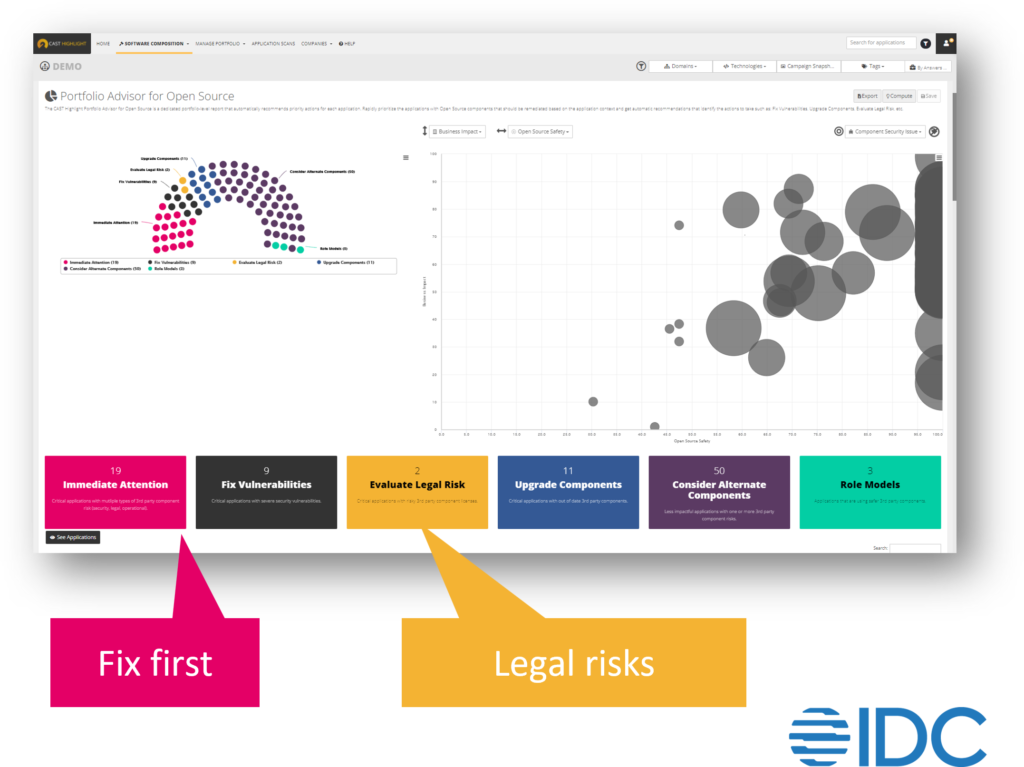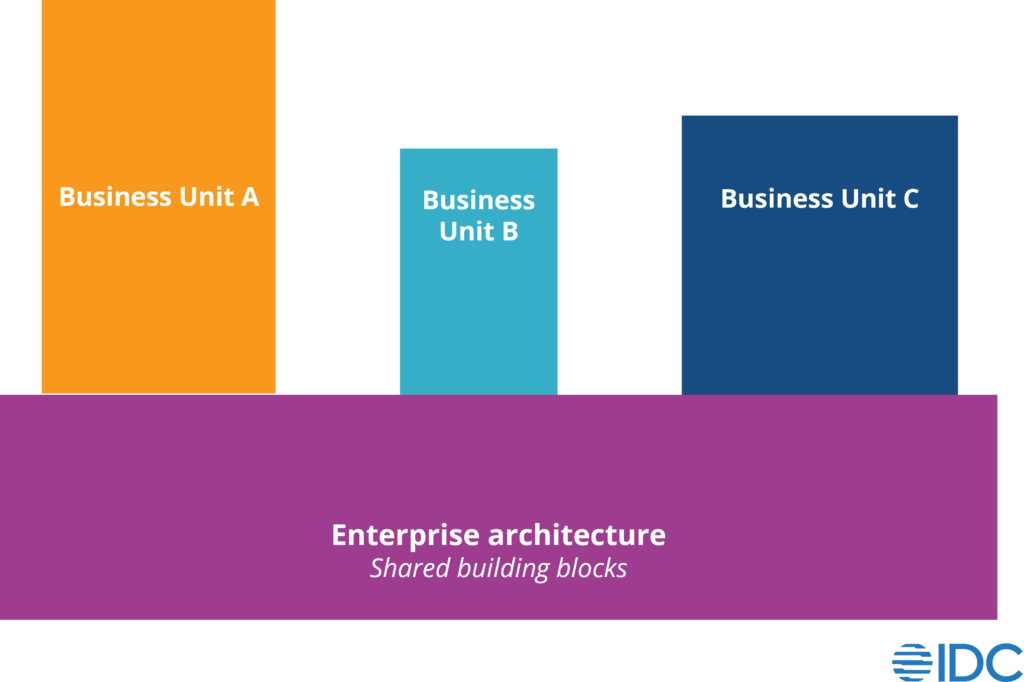Are you one of those IT leaders who is facing the challenge of making change happen at their organization with only a limited budget? Here are IDC’s suggestions for considerably improving the software development lifecycle with a small spend. These small investments can create enough leverage to make real changes happen.

Shift from run to change by creating better predictability. A healthy organization should spend most of its effort on creating new business value. We regularly speak to IT leaders who are struggling to bring the run-cost of their software maintenance to below 50%. By comparing the maintenance productivity to comparable portfolios in the market you can determine whether there’s room for improvement.
By analyzing the types of tasks your teams are spending their time on, you can identify improvement areas. These improvements create additional capacity and/or budgetary room to develop and deploy more changes that bring value to your organization.
On the change side of the software development lifecycle, predictability is critical. By comparing yourself against comparable teams in the market, it’ll be clear what aspects you can improve on and what aspects you are already above market average. These insights will increase the predictability of software development initiatives and make better use of your resources.
When NCOI, one of the leading life-long learning providers in Europe, analyzed the maintenance productivity of the nearshore team that was maintaining the core administrative system with IDC Metri’s help, the results were astounding. Within seven months that team could do the same output with only a third of the number of people. In this way, NCOI was able to redirect about € 250,000 per month from maintenance to development of new business value.

Introduce better prioritization of value by giving your product owners better insight into which features bring value to your organization, both in the long run and in the short term. In most agile application development organizations, product owners are (implicitly) responsible for the software value creation of the organization, without a solid basis to work from. You can help your product owners create better insight in the value of features over multiple dimensions, so that your business gets the features it needs to better serve your clients, but your IT portfolio remains future-proof.
It’s possible to train your product owners to work with the Software Value Map approach. Organizations who’ve partnered with IDC Metri have approached each requirement from 2-4 value perspectives. In this way, all value perspectives are balanced, so that not only new business features are released, but there is also sufficient attention to the prevention/reduction of technical debt, usage of (cloud) infra resources and product innovation. This leads to proud and effective product owners and teams that are satisfied with the features they deliver and the architectural runway they can work with.

Create better insight in your portfolio by getting a grip on the dependencies within your portfolio so that you can prevent rework and unnecessary reshuffling of priorities. Within weeks you can have your software portfolio analyzed. That will give you and your teams insight into the dependencies and possible risks to business benefits. This insight will help you and your teams make guided decisions in prioritization of resources and results in a fact-based starting point to improve the robustness of your portfolio.
When our client’s software portfolios were analyzed by our Software Intelligence provider partner, CAST, this not only gave them insight into the security, robustness and quality of their portfolio, but also gave them valuable information where they could make (more) use of standard building blocks from their cloud providers. By using standard building blocks, they could really shift left in their software development lifecycle. These organizations had to do less investment in capabilities that are already available and could reduce the amount of resources that had to be allocated to testing. On average these clients saved 5-10% on their software development lifecycle.

Induce a shift from re-invent to repeat by facilitating your teams so they can benefit from each other’s work. When you have insight into your portfolio, you can identify common building blocks in the portfolio that can benefit multiple teams. When you have identified a lot of these types of building blocks, you could even dedicate a team to the common part of your architecture. When you and your team start to look at which building blocks or microservices your enterprise architecture contains, you will see that the mentality of your teams will shift from re-inventing their own solutions to a common issue to repeated use of a common solution created by one of the teams. This way of thinking will not only boost your productivity, but also create a common ownership of all the teams for the whole portfolio.
Another driver for the centralization and standardization of building blocks is that IT is moving into the overall business-side of organizations more and more. Different business units can build their own applications on an enterprise architecture that provides them with standard building blocks they can work from. This decreases their security vulnerabilities and requires less test effort.




